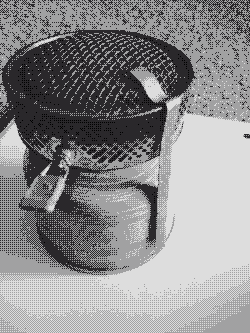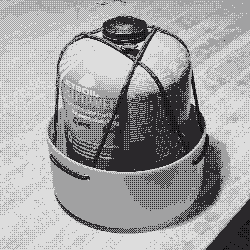Mobius Tips

Will be an ongoing article listing outdoor tips as I think of them
-Iron Law-
- Redundancy is equivalent to safety. Ive already written an article on this but this piece of advice has saved me and others numerous times. Especially when beginning your course into the outdoors, it's imperative you think and consider the things that must not fail and the risk of it failing. If you choose to forgo backing up a piece of key gear or not bringing one at all, at least bring that potentiality into the scope of your foray or learn a way on how to do without it.
- Complacency is killer. You must give full attention when full attention is needed. There's no other way around it. Its easy to fuck up when distracted or rushed, this often leads to everything from minor hiccups, to oh-shit moments, to moments that happen so fast its over before you realised. Complacency will catch all, even the best (Lynn Hill Fall). A good way to drill this into your head is by reading “Accidents in North American Climbing” couple times a year
- Slow is smooth and smooth is fast. Ive dropped a handful of gear up on climbs when I started out (even now), mostly due to being under the boot of not upsetting or trying to keep up with those who were more experienced and thus faster than I was. This code also applies to retreat. Even when under the pressure of bad weather, ive kept myself safe by taking slower relaxed action, as things could have ended up worse have I not done so.
- In the mountains, the first thing you must shed is hubris. There are many things to talk about in this subject but id rather leave you with one story from the AAC’s “Accidents in North American Climbing”. “Climber Michael Sandler witnessed the accident. In his report to Accidents, he
wrote~ As we were waiting, a single man walked by. I asked what his
name was, and we made some small talk. His name was Nate, and he was a lab tech
at UCSD. He was alone but had a rope, so I asked him what route he was planning to do. He told me he wanted to solo Meteor. he was planning to carry up the rope in a pack and use it to rappel. I asked if he just
didn't have any friends who wanted to climb, and he said that he did, but that he
liked soloing. He would not be wearing a helmet. At this point he started up the crag. He seemed gripped even by the third
bolt—he was on the nearby Leonids (5.9) and not his intended route, Meteor (5.8).
However, he made it up past the tricky start and kept heading up. As he did so, he
would occasionally grab bolts, and had some small amount of gear with him to assist
in this. He passed another party, which was already rappelling down the formation
at this point. They exchanged some words and asked if he was doing well. They
reported that he was continuing to occasionally grab bolts. At this point, we started climbing as well. I was leading the first pitch when I
felt a soft thud and gust of wind. I looked around and saw him hit a slab
below me, bounce off, hit another slab, and fall to the ground.”
- Never stop learning and re-learning. There is always time to be the best self you can be, be it picking up new techniques, re-reading old material you had started with, or dissecting a complex problem. When you feel comfortable of where your at, see if you could be even more efficient and safe with what you already have at your disposal.
- Learn how to tie a munter hitch, as well as the s(z)uper munter. This being one of the few techniques at your disposal when you inevitably drop your belay device, it’s mandatory to learn and ignorant to climb outdoors without knowing how to tie it.
-Nitty Gritty-
- On long outings, or/and with the possibilities of harsh weather, synthetic triumphs over down. Even with the advanced textiles and (not so) Durable-Water-Resistant coatings we apply to our down products today, down will eventually succumb to moisture, lose its insulating properties, and weigh much much more. Down products seem to me more of a piece of technical equipment for when the conditions are right and the user wants to benefit from its low mass and volume and its high efficiency. Synthetic products however, are hardy and foolproof. Their resistance to moisture allows the possibility of drying in the field (or even overnight if your lucky) as well as maintaining their insulative properties. They are generally cheaper to produce, and wont leak its precious insulation when damaged. Best of all, its one less thing to micromanage and consider
- When using a down sleeping bag in long/adverse settings, consider bringing a light bivvy bag or synthetic quilt. It can take the brunt of the moisture buildup that accumulates in dewy mornings or stormy wet weather, not to mention it can provide some warmth in a meager sleep system
- Ditch your screwgate lockers. Its often that they are locked when you need them unlocked and are unlocked when you wish they weren’t. Modern autolocking carabiners keep you safe and efficient. Double actions for most things and triple when its imperative that they never open. To lighten the rack consider using Grivel double wiregates. When wiregates came out they were praised for their lightness and the lower possibility of flicking open when shocking the heavy carabiners of the past, with Grivel’s double apposed wiregates there is virtually zero chance something slips out.
- Stop, and evaluate. Some climbers, before a pitch of hard climbing stop to brew up and assess the conditions and whats ahead. Even if your no hardcore alpinist it’s a good idea to adopt this ritual. A chance to clear your head, check the changing weather, stretch, drink some fluids, nibble on some energy ,remember to double check the important parts of your system, calm the nerves, and prepares for whats to come. It’s easy to forget the important things when rushing and ecstatic.
- Cold weather will make your isobutane stoves run like shit. In the US nothing beats the ease and efficiency of using a isobutane stove (MSR reactor/jetboil/windburner/pocketrocket, soto windmaster/amicus, BRS, ECT). However at around 11 degrees F the canisters filled with a mix of isobutane and propane only sputter and fail. This becomes something to watch over especially since the process of burning the mix decreases pressure in the canister and quickly freezes the canister to whatever solid ground the canister sits on. There are many ways to increase efficiency and make it possible to use and consider canister stoves in cold conditions.
![]()
- Keep the canister off the ground. the ground already sucks out a significant amount of heat from your body when sleeping, the same happens to a canister especially so with the temperature decreasing during pressure loss. Besides loss of efficiency, ive once had a canister freeze to the solid ground under it. Its best to have something under the canister or have it suspended if possible, a well fitting plastic cap, a thin rubber mat, a wood coaster, just anything.
![]()
- Keep it warm. Placing a fuel canister underneath your insulation layer an hour or so before use dramatically increases output and efficiency in contrast to keeping it in your cold rucksack all day
![]()
- Consider alternative methods. If having fire is a necessity on a trip, it’s a good idea to pack something else besides a stove in order to start a fire. A bag of cottonballs dipped in petrolium jelly used to start a fire left in your emergency/medical kit is a lightweight solution to carry in case.


- Look into experimental forum shit. There are 2 notable methods I know of to increase the efficiency and possibility of canister use in winter. One is simply having your canister be submerged in water during use to slow the process of pressurized cooling. Find a shallow plastic cup that fits your canister about 3/4s up, drill some holes on its uppermost part and pass some shockcord through making a star/pentagram to keep the canister still when placed inside. When you need to brew up, simply pour whatever liquid you have on yourself (water ration, leftover tea, piss) into the plastic holder with your canister and use like normal. The other method is a bit sketchier but the principle is simple. Copper is an efficient conductor of heat that travels a good distance within its material. To make use of this unique characteristic, cut a piece of 2-4mm sheet copper into a rectangle and measure it against your preferred canister size and stove piece, bend the top of your copper sheet the the base of the burner of your stove and attach the copper piece by the use of heat resistant cord or rubber bands. In use, the burner transfers some heat through the copper piece back to the canister. This is as sketchy as it sounds so its best to be cautious when using this method but it works surprisingly well. I’ve not tried this myself but combining both of these techniques might prove itself to work very well.
- Understand that when getting into the sport, financial mistakes and regrets are part of the game. Climbing/Mountaineering is very gear intensive and with the many different mediums of climbing you can get into, gear choices can be extensive and exhausting. Most climbers start into the sport cheaply with a momentum/camp harness and cheap shoes but quickly want to “upgrade” on to more specialized gear or get persuaded by steezy gear. The financial regret comes when purchased gear no longer applies to your progression. The tuber you bought when you started out had only one slot for a rope with no guide mode, making you have to purchase another with needed features. The fat 40 meter gym rope you bought was cheap and long enough for the lead walls in your gym but proves impossible to use at most crags when you get stuck halfway down the lower. For these reasons its best in the beginning of your climbing journey to purchase gear that is versatile and durable. Look towards climbers racks in fields that represent your ambitions. For expensive purchases like a rack of protection, look into forums for which brands/types of gear work best in the areas you climb in. Most people can be biased in their niche of pro that they first bought but there is typically a consensus which pro is best all round (Totem cams in most rock, DMM nuts/offsets, Blue Ice/camp steel screws). After you progress into your niche, knowledge and experience will enable you to differ your gear choices to something more specialized and personal. For some gear, keep in mind that the possibility of aftermarket support can further optimize future and current gear for different uses (aftermarket ice tool picks, GriGri modifications for rope solo). Choosing adequate clothing is an equally expensive and confusing endeavor. Its easy to get bogged down by the variety of advertising and obtuse technology outdoor companies spout about their products, your current wardrobe is probably chock full of clothing you can already use perfectly fine in the outdoors, just keep to synthetics. As mentioned in previous tips, stick to synthetic insulation when buying your first jackets. As a personal note, I spent a lot of money in my early climbing career purchasing experimental/niche gear that I thought would suit my needs but proved quickly that I should have just pony’d up the dosh for gear that really suited my pursuits (I had purchased experimental step in salomon boots with a rear welt for ice climbing, on my first ice climb my calves felt like they were about to burst 10 meters up. I then tried a pair of used Arc procline ski boots which proved themselves clunky and heavy. I had fully realized my mistakes when I climbed in a pair of nimble Phantom Tech’s for the first time). Take time to look into gear that is outside the climbing sphere, Golf gloves work best for drytooling in warmer weather, Japanese fishing gloves for the winter. To end off, with a sewing machine and some tools its a good use to make what you need, whether it be a sleeping bag or splicing dyneema cord for a lightweight tagline.
- Extend your rappel device with your PAS (personal anchor system). Most climbers these days have a PAS (petzl connect, edelrid switch, kong switch, a sling girth hitched through tie in loops) living on their harnesses. The benefits of extending your rappel device are better ergonomics, more control, your device is in view and away from getting your prussik sucked in, also negating the possibility of your prussik slipping when in a situation where you come unconscious. To do this, simply unweight and extend the connector on your PAS far away from you, tie a clove hitch in the middle of the PAS rope and connect your rappel device like normal.


